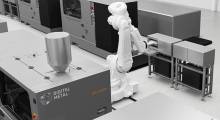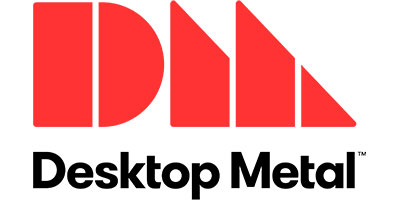Desktop Metal’s new Studio System 2 enables high-quality metal parts production in an office environment with a simplified two-step solution that eliminates the need for a solvent debind phase, the company explains. The simplified, office-friendly metal 3D printing technology offers a means to print metal parts in low volumes for pre-production and end-use applications.
“As additive manufacturing adoption advances worldwide, Desktop Metal continues to drive innovations that enable the technology to more effectively compete with conventional manufacturing processes,” says Ric Fulop, CEO and co-founder of Desktop Metal. “Our next-generation Studio System 2 takes the best features of the original Studio System+ and significantly improves upon them, delivering higher quality end-use metal parts through a more streamlined and accessible process, and within an even smaller footprint.”
Enhancements include new print profiles and an all-new material system designed to deliver part quality, accuracy and surface finish while minimizing printing trial and error across a wider range of complex geometries. Desktop Metal’s Fabricate software workflow fully automates part creation through printing and sintering to produce high-quality, end-use parts with densities and feature accuracy similar to casting.
Next-generation metal 3D printing
The new Studio System 2 retains all the critical features of the original Studio System, while delivering advancements that make metal 3D metal printing even easier, the company says. Benefits include:
- 2-step process. Studio System 2 eliminates use of solvents with new material formulations that allow parts to be transferred directly from the printer into the furnace. The result is an accessible two-step process with a nearly hands-free experience that reduces consumables usage and overall system footprint.
- Range of complex geometries.
- Enhanced surface finish. The Studio System 2 printer’s heated build chamber and new print profiles produce quality surface finish right out of the furnace across side walls and support-facing surfaces, company says.
- High-strength, triply periodic minimal surface (TPMS) infill. New isotropic TMPS infill creates strong parts for end-use applications. Vacuum sintering in the Desktop Metal furnace at temperatures of up to 1400°C produces parts and mechanical properties that are similar to castings and meet or exceed Metal Powder Industries Federation (MPIF) standards.
- Broad portfolio of materials. The Studio System 2 is launching with 316L stainless steel. A broad portfolio of more materials that use the new streamlined, two-step process is in active R&D with new releases slated to rollout in 2021. In addition, the Studio System 2 will be backwards-compatible through the use of the debinder, with all materials previously supported by the Studio System, including 17-4PH stainless steel, 4140 low alloy steel, H13 tool steel, and Copper.
- Software controlled workflow. Desktop Metal’s Fabricate software features new, default print profiles tailored to the Studio System 2 process that simplify build preparation while still providing users access to more than 90 customizable print settings. Fabricate also generates Separable Support structures with strategic splits to avoid locking during post-processing and fully automates thermal debind and sintering cycles.
Worldwide shipments of the Studio System 2 are set to begin in the first quarter of 2021, with all existing Studio System customers eligible to upgrade.
“Based on the success of our original Studio System, we know companies around the globe are eager to adopt our new, more streamlined Studio System 2 process to produce difficult-to-machine parts featuring complex geometry like undercuts and internal channels,” says Fulop. “Across manufacturing, tooling, automotive, consumer products and electronics, and medical applications, companies are sharing how additive manufacturing is challenging their design and engineering teams to think differently about how to optimize designs for best-in-class part success.”
The Studio System 2, which is set to begin worldwide shipments in the first quarter of 2021, will also be available through an upgrade for all existing Studio System customers.
About the Author
Press releases may be sent to them via [email protected]. Follow Robotics 24/7 on Facebook
Follow Robotics 24/7 on Linkedin
Article topics
Email Sign Up
















